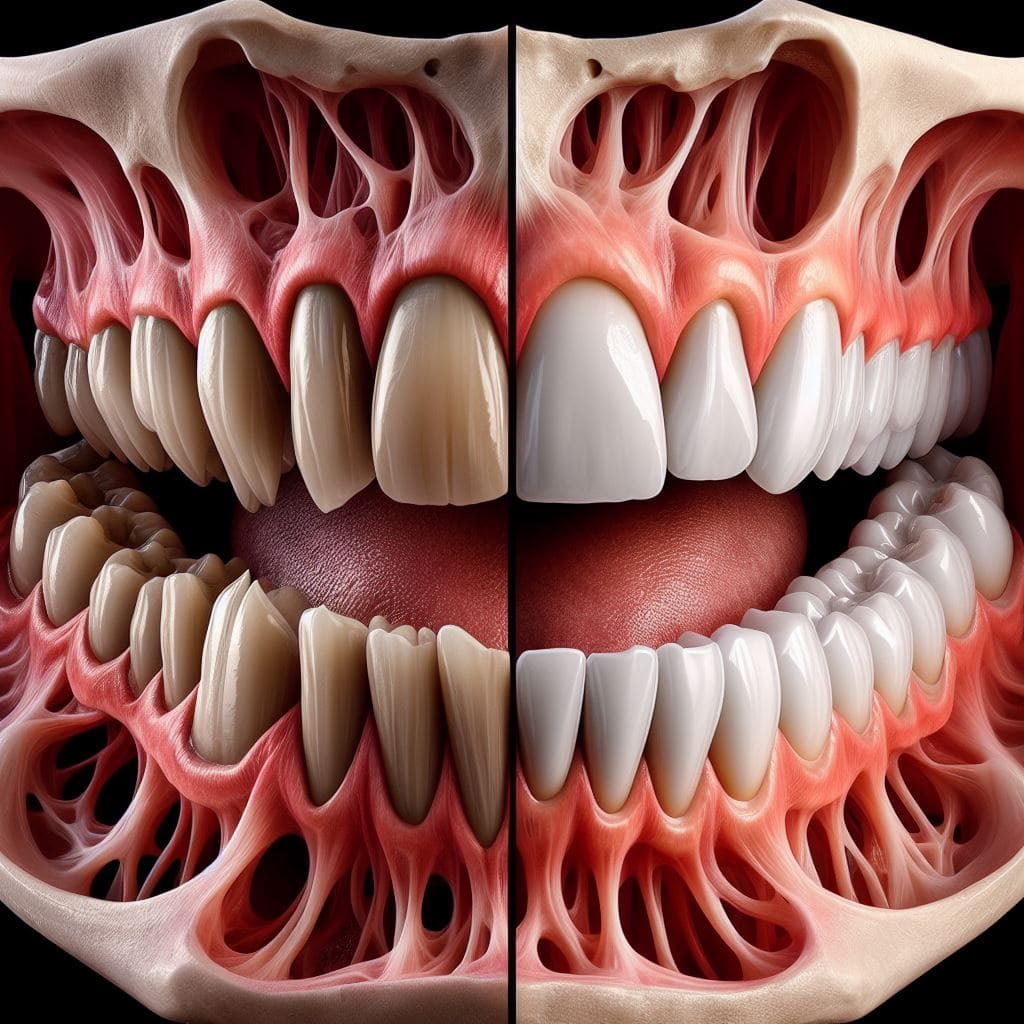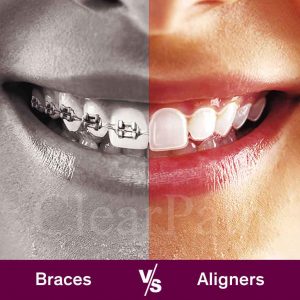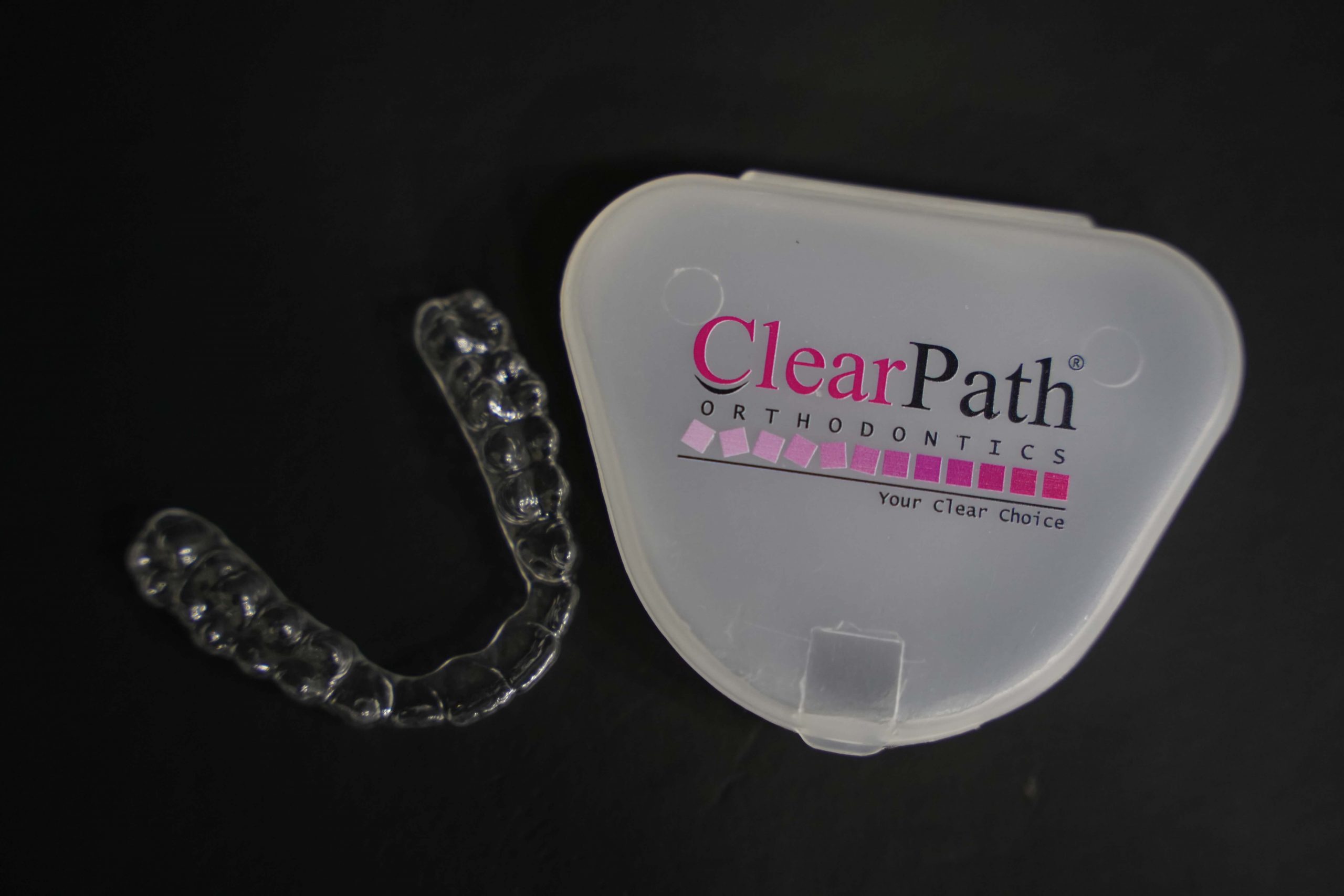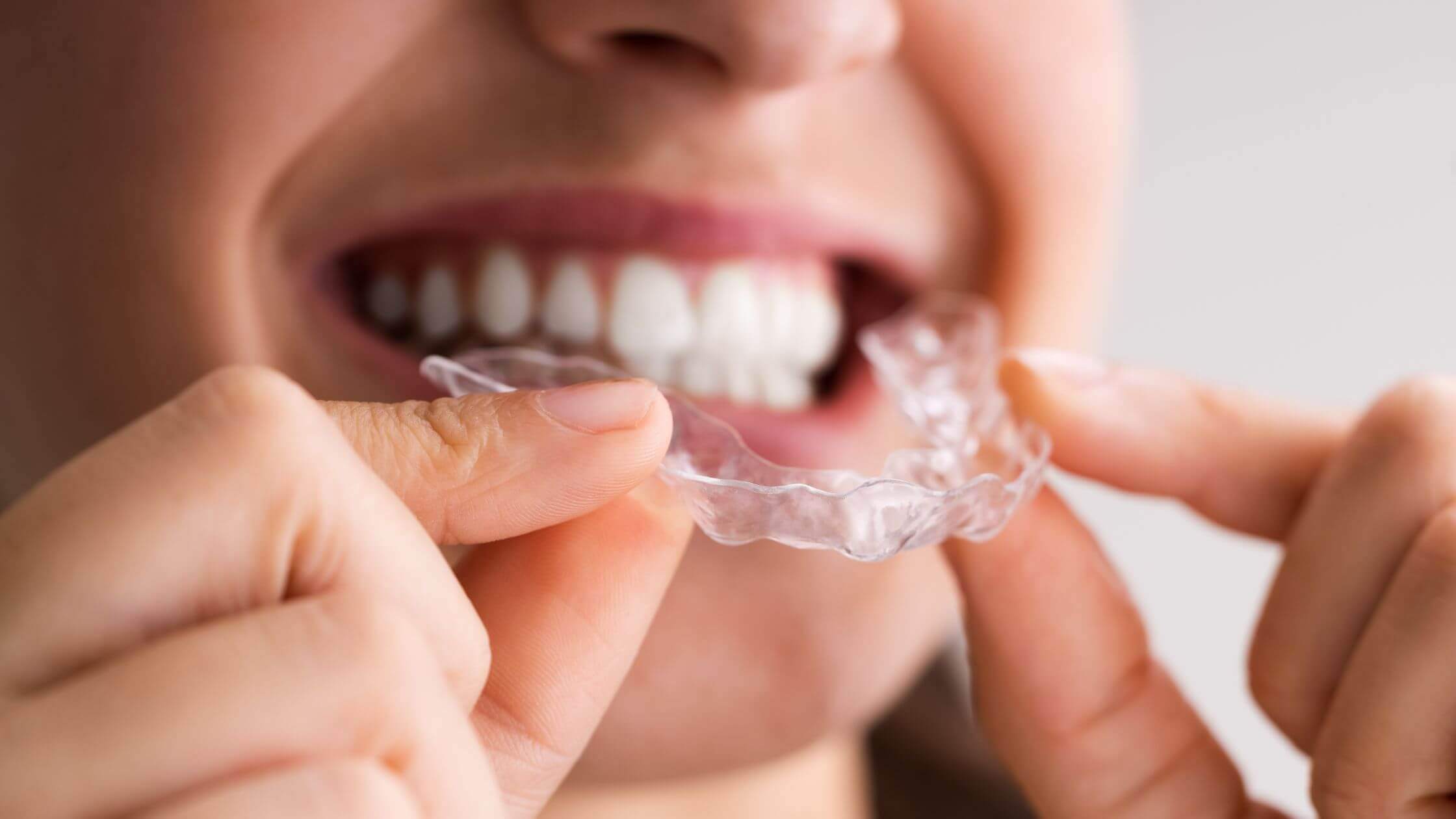A captivating smile isn’t just a superficial attribute; it’s a testament to both oral well-being and self-assurance.
If you find yourself dissatisfied with your smile due to misaligned or crooked teeth, the culprit might be lurking in the form of overjet or overbite.
These terms encapsulate two common malocclusions, or improper bites, which can impact not only your appearance but also your oral health and functionality.
Fear not – for there exists effective treatment capable of steering you towards a straighter and healthier smile.
Join us on an illuminating journey through the intricacies of overjet and overbite, as we unravel their origins, explore diverse treatment avenues, and uncover why clear aligners stand out as a revolutionary solution.
A review of studies in the Dental Press Journal of Orthodontics revealed the prevalence of overjet and overbite in the global population
Table of Contents
ToggleWhat is overjet?
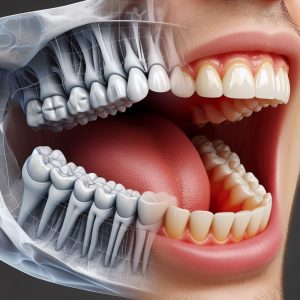
Overjet is like a rebel among teeth, constantly pushing the upper front teeth outward, creating a horizontal gap when you bite down.
It’s the dental equivalent of ‘buck teeth’ or ‘rabbit teeth’—terms that, let’s admit, sound a bit whimsical despite describing a real condition.
Now, let’s clear up a common misconception—overjet isn’t the same as overbite. Overbite involves a vertical overlap of the upper and lower teeth, a different kind of dental complication.
Yet some folks end up with both overjet and overbite, turning their dental ordeal into a more complex and intriguing story.
Normal Overjet
An overjet, sometimes referred to as buck teeth, is a dental condition where the upper teeth protrude outward and sit over the bottom teeth.
This condition can affect not only your appearance but also your ability to chew, drink, and bite. It may even cause jaw pain.
The normal range for an overjet is when the upper front teeth rest slightly in front of your lower teeth when closing your mouth, they’re usually 2 millimeters (mm) apart.
However, if your upper front teeth extend in front of your lower teeth by more than 2 mm, it is considered an overjet.
Causes of Normal Overjet
There isn’t a single cause for an overjet, but rather different variables that can contribute to this condition.
Sometimes, an overjet is hereditary. So if your mother or father has one, you might develop one, too.
An overjet can also form if you had a habit of sucking your thumb or fingers as a child. Having a tongue thrust can also lead to an overjet, as can using a pacifier for an extended period.
Reverse Overjet
A reverse overjet, also known as an underjet, is a condition where the lower teeth protrude or splay out.
This condition often occurs when the lower jaw is ‘oversized’, or the upper jaw is undersized or a combination of both. This usually results in the front teeth biting the wrong way around.
Celebrities with Overjet Teeth
Despite the challenges that come with having an overjet, many celebrities have embraced this unique feature.
For instance, Freddie Mercury, the iconic Queen frontman, reportedly resisted fixing his teeth because he was concerned that it would change his voice.
Other celebrities known to have overjets include actor Tom Cruise and supermodel Cindy Crawford.
Whether it’s a normal overjet or a reverse one, it’s important to remember that everyone’s smile is unique.
And as our celebrity examples show, an overjet doesn’t have to hold you back from achieving greatness.
What causes overjet?
Overjet takes center stage in the intricate realm of dental dynamics.
Delving into the origins of this condition requires a professional lens, examining the nuanced interplay of various factors:
Genetics: Inherited predisposition—small lower jaw or expansive upper jaw—contributes to teeth misalignment, establishing a familial link to overjet.
Habits: Thumb sucking, tongue thrusting, and prolonged use of pacifiers or bottles impact dental development, influencing jaw structure and teeth positioning.
Tooth Loss: Decay, injury, or intentional extraction leading to tooth loss creates voids, prompting remaining teeth to shift and fostering the emergence of overjet.
Trauma: Injuries to the jaw or face become defining moments, leaving a lasting impact on teeth alignment and the orchestration of the bite, positioning trauma as a significant influencer in the overjet narrative.
A study published in The Angle Orthodontist discussed a patient who had an overbite, which was primarily the result of a thumb-sucking habit
What are the problems caused by overjet?
Let’s decode the impact of overjet, uncovering a spectrum of challenges that extend beyond the visible:
Aesthetic Concerns: Overjet affects self-esteem and confidence, leading to potential embarrassment or insecurity about one’s smile.
Oral Health Implications: Cleaning becomes challenging, elevating risks of plaque, cavities, and gum disease. Overjet accelerates teeth wear, causing sensitivity, cracks, or fractures.
Functional Hurdles: Biting, chewing, speaking, and breathing face disruptions. Stress on jaw muscles and joints may result in pain, headaches, or temporomandibular disorders (TMD).
Overjet isn’t just a cosmetic issue; it poses challenges to aesthetics, oral health, and functional aspects, demanding a comprehensive approach to resolution.
What is overbite?
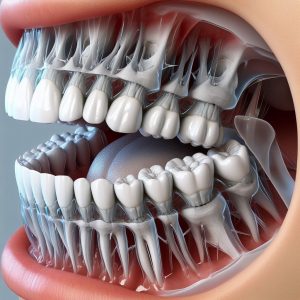
Imagine you bite down, and your upper front teeth steal the show by covering a bit too much of their lower counterparts.
This condition is what we call overbite, and it adds a vertical layer to the tale of our teeth. In the dental world, it’s affectionately known as a ‘deep bite,’ owing to the substantial depth of this tooth overlap.
Now, let’s clear up a common misconception—overbite isn’t a horizontal movement like its counterpart, overjet.
Overbite is all about the vertical embrace of the upper teeth over the lower ones.
Yet, here’s the intriguing twist: some individuals find themselves with both overbite and overjet, making their oral treatment more complex.
What causes overbite?
Several factors can contribute to overbite, these include:
Genetics: Inherited traits like a large upper jaw or a small lower jaw contribute to teeth misalignment, fostering overbite.
Habits: Habits, including thumb sucking and prolonged use of pacifiers, shape jaw development, and tooth positioning, influencing overbite.
Tooth Size: Small or crowded teeth create gaps, allowing upper teeth to gracefully overlap lower ones in the overbite scenario.
Jaw Growth: Uneven or abnormal jaw growth becomes a director, influencing teeth alignment and the intricate dance of the bite in an overbite.
Before and After: A Visual Journey
To truly appreciate the impact of clear aligner treatment on overbites, let’s consider some before and after scenarios.
Please note that the images have been graphically modified to ensure privacy and prevent copyright issues.
Image 1 – Before Treatment: The image shows a noticeable overbite, with the upper front teeth significantly overlapping the lower front teeth.
Image 1 – After Treatment: The image reveals a remarkable transformation. The upper front teeth now rest slightly in front of the lower teeth, indicating a successful correction of the overbite.
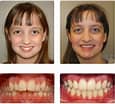
Image 2 – Before Treatment: The image displays an overbite, accompanied by crowding of the lower front teeth.
Image 2 – After Treatment: The image showcases not only the correction of the overbite but also the resolution of the crowding issue, thanks to the comprehensive treatment plan involving clear aligners.
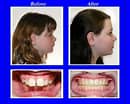
These transformations underscore the effectiveness of clear aligner treatment in correcting overbites.
However, it’s important to remember that every case is unique. Therefore, consultation with a dental professional is crucial to determine the most suitable treatment plan for you.
Clear aligner treatment offers a promising solution for overbite correction, as evidenced by the dramatic before and after transformations.
It’s a journey towards not just a better smile, but also improved oral health and enhanced self-confidence.
Navigating Overbite Challenges
Embarking on the journey through overbite unveils a spectrum of challenges that extend beyond the surface.
These include:
Aesthetic Concerns: Impact on appearance and smile, potentially leading to a “gummy” smile or a distinctive “bulldog” look.
Oral Health Implications: Cleaning challenges elevate risks of plaque, cavities, and gum disease. Overbite accelerates teeth wear, causing sensitivity, cracks, or fractures.
Functional Hurdles: Disruption in biting, chewing, speaking, and breathing, with potential stress on jaw muscles and joints causing pain, headaches, or temporomandibular disorders (TMD).
How to Treat Overjet and Overbite?
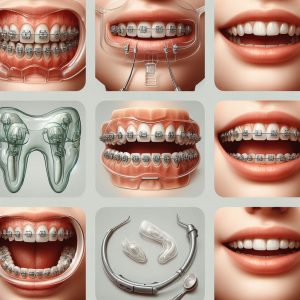
The best treatment option depends on the severity of your condition, your age, your budget, and your preference.
Embarking on the journey to correct overjet and overbite unveils a range of orthodontic methods, each with its pros and shortcomings:
Braces: Traditional method with metal wires and brackets. Effective but comes with discomfort, cleaning challenges, dietary restrictions, and aesthetic concerns.
Appliances: Devices like headgear, palatal expanders, retainers, and bite plates. Used alone or with braces for mild to moderate cases. May cause discomfort, inconvenience, and social considerations.
Surgery: Reserved for severe cases. Involves cutting and reshaping jaw bones. Transformative but invasive and risky.
Clear Aligners: Modern, custom-made plastic trays. Removable, comfortable, easy to clean, and virtually invisible. Effective for mild to severe cases, often faster than braces or appliances.
Each method offers distinct benefits and considerations, paving the way to a beautifully aligned smile. Consult your orthodontist to verify the best option for you.
How can clear aligners help with overjet and overbite?
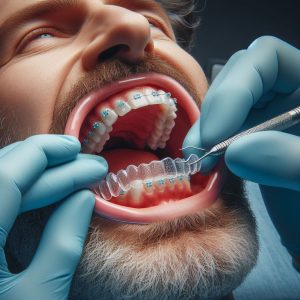
Embarking on the journey with clear aligners unveils a transformative orthodontic experience:
Invisibility: Virtually unseen, clear aligners discreetly correct teeth alignment without drawing attention.
Removability: Enjoy the freedom to remove aligners for eating, drinking, brushing, or flossing, simplifying oral care and dietary choices.
Comfort: Wire-free and bracket-less, clear aligners apply gentle, consistent pressure without causing mouth or gum irritation.
Convenience: Take control by changing aligners at home every week or two, reducing the need for frequent dentist or orthodontist visits for adjustments.
Why Clear aligners might be the best choice for overjet or overbite treatment?
Embarking on the transformative journey with clear aligners reveals a versatile solution for a spectrum of dental concerns:
- The versatility of Treatment: Clear aligners address not only mild to moderate overjet and overbite but also issues like crowding, spacing, and open bite, showcasing their versatility in dental correction.
- Corrective Precision: The magic lies in the ability of clear aligners to delicately shift teeth into a harmonious alignment, offering precision in addressing overjet and overbite concerns.
- Tailored Movements and Attachments: Depending on the type and location of overjet or overbite, distinct movements and attachments come into play for optimal results.
| Type of Overjet & Overbite | Movements & Attachments Required |
| Posterior Overjet | Expansion screws or buttons widen the upper arch, creating space. |
| Anterior Overjet | Elastics or hooks balance tooth positioning |
| Single Tooth Overjet | Attachments or ridges provide grip and force for alignment |
| Deep Overbite | Bite ramps or turbos lift the bite, enhancing clearance |
| Shallow Overbite | Elastics or hooks optimize tooth overlap. |
- Functional Enhancement: Beyond aesthetics, clear aligners enhance bite and chewing function, mitigating jaw pain and headaches. Progress is visible, instilling confidence throughout the treatment journey.
In the realm of orthodontics, clear aligners emerge not just as a corrective tool but as a personalized and dynamic solution, offering both precision and progress for a harmonious and confident smile.
What are the benefits of clear aligners for overjet and overbite?
Embarking on the journey with clear aligners unfolds a myriad of advantages, reshaping the landscape of orthodontic care
Some of the benefits include:
Enhanced Aesthetics: Witness a confident smile as clear aligners close gaps, straighten crooked teeth, and align smiles, providing visible progress.
Holistic Oral Health: Clear aligners prevent overjet and overbite-related issues, tackling plaque, bacteria, tooth decay, gum disease, and bad breath. They enhance bite and chewing function, reducing the risk of jaw pain and headaches.
Comfort and Convenience: Tailored for lifestyle, clear aligners offer the flexibility to be removed as needed. Say goodbye to discomfort with metal braces, and experience fewer visits, saving both time and money.
In the evolving landscape of orthodontic care, clear aligners stand out as a patient-centric solution, offering precision, aesthetic appeal, and unparalleled comfort for transformative overjet and overbite correction.
How to Get Started with Clear Aligners?
Ready to set sail on a path to a straighter, healthier smile?
Dive into the possibilities of tailored clear aligners designed to address your overjet and overbite concerns.
In the dynamic world of orthodontics, clear aligners stand tall as beacons of innovation, empowering individuals to embrace smiles that exude confidence and embody optimal oral health.
Don’t let overjet and overbite cast a shadow on your smile—step into a future where clarity aligns seamlessly with transformation. Consult our team of expert orthodontists at Clearpath Ortho today
Your smile deserves to radiate pride and joy!
Take the first step toward your confident, transformative smile by filling out the contact form below.

